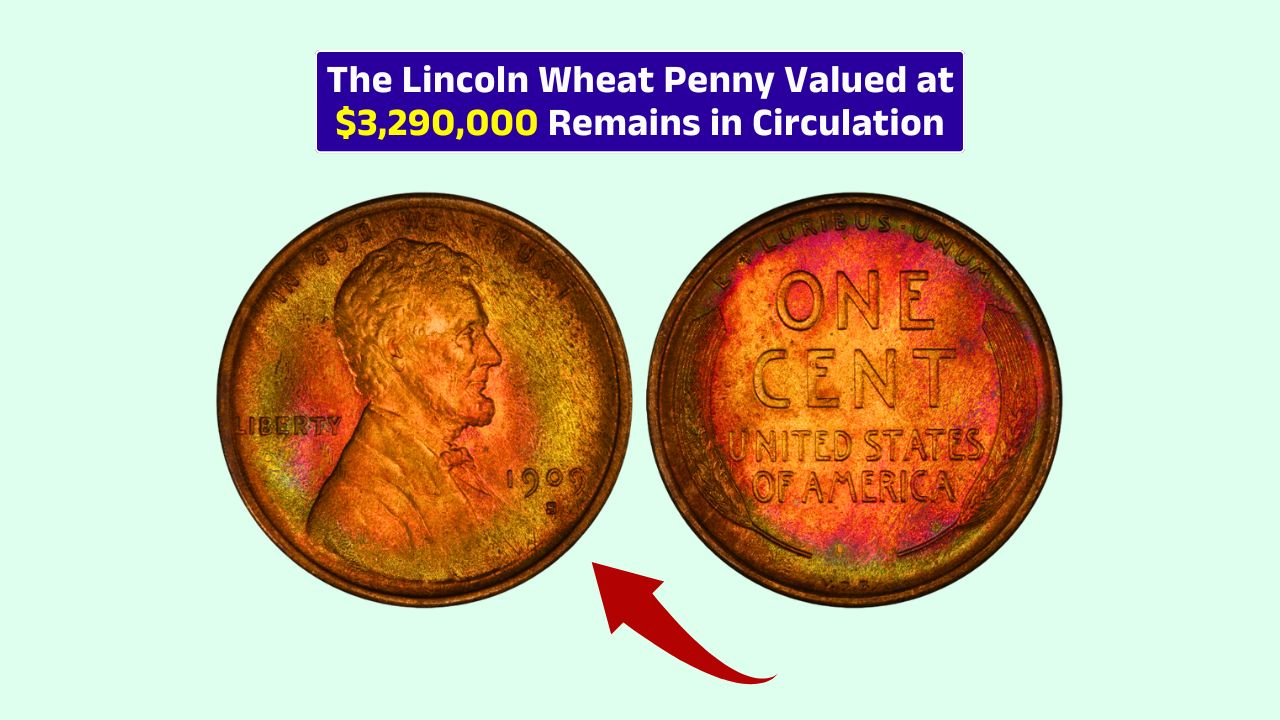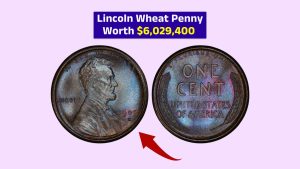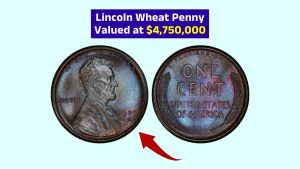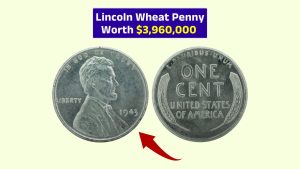In the world of coin collecting, few coins stir up as much buzz and excitement as the Lincoln Wheat Penny. A cornerstone of American history, this little copper coin has become a hot topic among collectors, historians, and even everyday folks.
Why? Because one of them was recently valued at a mind-blowing $3,290,000 — and yes, there’s a chance coins like it are still out there in circulation.
History
The Lincoln Wheat Penny made its debut in 1909 to honor the 100th birthday of Abraham Lincoln. Designed by Victor David Brenner, it became the first U.S. coin to feature an actual person.
On the front is Lincoln’s profile, and on the back, two wheat stalks framing the words “One Cent” — a nod to prosperity and the American heartland.
These coins were minted from 1909 to 1958, with millions produced. However, not all were created equal. A handful have unique features or errors that make them ultra-rare — and ultra-valuable.
Rarity
So why is one penny worth $3,290,000? It all comes down to rarity and error. Certain coins, like the 1943 Copper Penny and the 1909-S VDB, were made under unusual circumstances or in extremely limited numbers.
During World War II, pennies were supposed to be made of steel to conserve copper for ammunition. But in 1943, a few bronze planchets were accidentally used, resulting in the legendary 1943 Copper Penny.
Meanwhile, the 1909-S VDB was produced at the San Francisco Mint in very limited quantities and features the designer’s initials — VDB — on the reverse.
These coins are so rare that even a single confirmed find can shake the coin world and sell for millions.
Circulation
You might think all the valuable coins are already snatched up by collectors — but that’s not entirely true. Some of these prized Wheat Pennies may still be sitting unnoticed in old jars, sock drawers, cash registers, or inherited coin collections.
Back in the day, rare coins often circulated unknowingly, especially before collectors started closely inspecting every penny.
The idea that a million-dollar coin could still be hiding in plain sight is what makes this hobby so thrilling.
Clues
Not sure what to look for? Here are a few tips to spot a potentially valuable Lincoln Wheat Penny:
| Feature | What to Check |
|---|---|
| Mint Marks | Look for an “S” or “D” below the date |
| Rare Dates | 1909-S VDB, 1914-D, 1922 No D, 1943 Copper |
| Error Types | Double dies, off-center strikes, etc. |
| Condition | Near-mint or uncirculated = more value |
Use a magnifying glass and good lighting to examine your coins. If something looks odd or rare, don’t clean it — just get it professionally graded. A genuine expert can help you determine whether it’s a common penny or something extraordinary.
Demand
Coin collecting isn’t just a quirky pastime anymore — it’s big business. Online auctions, marketplaces, and social media have fueled a surge in interest. That means rare coins, especially ones in pristine condition, are getting even more valuable.
Collectors are willing to pay top dollar for verified rarities. The Lincoln Wheat Penny that sold for $3.29 million is proof that these coins are more than just metal — they’re investments and historical artifacts all rolled into one.
The Lincoln Wheat Penny may just be the most exciting piece of pocket change out there. With stories of million-dollar valuations and rare versions still lurking among everyday coins, it’s a modern-day treasure hunt.
So next time you find a penny, don’t just toss it aside. Take a closer look — you might be holding a fortune that fits in your hand.
FAQs
What is the most valuable Lincoln Penny?
The 1943 Copper Penny is valued up to $3.29 million.
How do I spot a rare Wheat Penny?
Look for mint marks, rare dates, and striking errors.
Is the 1909-S VDB penny rare?
Yes, it’s one of the most sought-after Wheat Pennies.
Can rare pennies still be in circulation?
Yes, some may still be found in everyday change.
Should I clean my old pennies?
No, cleaning can reduce their value significantly.



